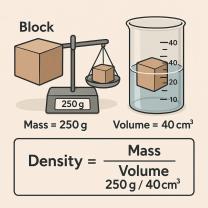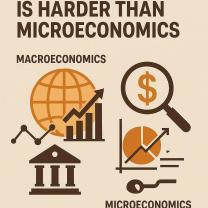Do teachers receive a pension?
Many teachers in the United States do receive pension benefits as part of their retirement compensation package. Teacher pensions are a form of retirement plan provided to educators, and they are typically defined benefit plans. Here's how teacher pensions work:
Defined Benefit Pension Plans: Teacher pensions are typically structured as defined benefit plans. In a defined benefit plan, the retirement benefit is predetermined based on factors like a teacher's years of service, final average salary, and age at retirement. This means that teachers receive a predictable, regular payment upon retirement, often for the rest of their lives.
Eligibility and Vesting: Teachers become eligible for pension benefits after a certain number of years of service, commonly referred to as vesting. The specific requirements for eligibility and vesting vary by state, school district, or educational institution.
Contributions: Both teachers and their employers make contributions to the pension fund during the teacher's working years. The contributions are invested, and the fund's investment returns help sustain the pension system.
Retirement Age: The age at which a teacher can start receiving their full pension benefit often varies but is usually between 60 and 67 years old. Some pension systems also offer early retirement options with reduced benefits for those who retire before the full retirement age.
Payout Options: Teachers may have choices about how they receive their pension benefits. They can typically choose from options like a single life annuity (benefits paid only during their lifetime), a joint and survivor annuity (benefits continue for a spouse after the teacher's death), or lump-sum payouts in some cases.
Cost-of-Living Adjustments: Some pension plans provide cost-of-living adjustments (COLAs) to help protect pension payments from inflation. The frequency and calculation of COLAs vary by plan.
It's important to note that the specifics of teacher pensions can vary significantly from state to state and even from one school district to another. The funding status of teacher pension plans and the generosity of benefits may also differ widely. In recent years, some states and school districts have made changes to their pension systems due to concerns about sustainability and budget constraints.
Additionally, many teachers in the United States have the option to participate in additional retirement savings plans, such as 403(b) plans, which are similar to 401(k) plans in the private sector. These supplemental plans allow teachers to save for retirement beyond their pension benefits.
If you are a teacher or are considering a career in education, it's essential to understand the specific details of your pension plan, including eligibility requirements, contribution rates, and retirement benefit calculations. You can obtain this information from your school district or educational institution's HR department and review the terms of your pension plan's documentation.
Sure, here are three articles on the topic of teacher pensions:
Teacher Pensions: Understanding Educators' Retirement Benefits
Introduction
Teacher pensions are a form of retirement savings that are typically provided by state and local governments to teachers. They are designed to provide teachers with a steady income stream after they retire.
How Teacher Pensions Work
Teacher pensions typically work on a defined-benefit basis. This means that the amount of money a teacher will receive in retirement is determined by a formula that takes into account their years of service and their average salary.
Benefits of Teacher Pensions
Teacher pensions offer several benefits to teachers, including:
- A guaranteed income stream in retirement
- Tax-deferred savings
- Portability between states
Challenges of Teacher Pensions
Teacher pensions are facing a number of challenges, including:
- Underfunding: Many teacher pension plans are underfunded, which means that they do not have enough money to pay all of their future obligations.
- Rising costs: The cost of teacher pensions is rising due to factors such as an aging population and increasing healthcare costs.
- Political pressures: There is growing political pressure to reform teacher pensions, and some states have made changes to their pension plans in recent years.
The Future of Teacher Pensions
The future of teacher pensions is uncertain. It is likely that teacher pensions will continue to face challenges in the years to come. However, teacher pensions are an important part of the retirement security of many teachers, and it is important to find ways to make them sustainable.
Do Teachers Receive Pensions? Exploring Retirement Plans
Introduction
Whether or not teachers receive pensions depends on the state or municipality in which they work. In some states, teachers are mandatory members of the state's pension plan. In other states, teachers have the option of joining the pension plan or participating in a 401(k) plan or other retirement savings plan.
Types of Teacher Retirement Plans
There are two main types of teacher retirement plans:
- Defined-benefit plans: These plans provide a guaranteed income stream in retirement based on a formula that takes into account the teacher's years of service and average salary.
- Defined-contribution plans: These plans allow teachers to save money for retirement on a tax-deferred basis. The amount of money a teacher will receive in retirement depends on how much they save and how their investments perform.
Benefits of Teacher Retirement Plans
Teacher retirement plans offer several benefits to teachers, including:
- Tax-deferred savings: Teachers can save money for retirement on a tax-deferred basis, which means that they will not pay taxes on their savings until they withdraw them in retirement.
- Portability: Teacher retirement plans are typically portable, which means that teachers can take their retirement savings with them if they change jobs or move to a different state.
- Employer contributions: In some cases, employers may contribute to teachers' retirement plans.
Challenges of Teacher Retirement Plans
Teacher retirement plans are facing a number of challenges, including:
- Underfunding: Many teacher retirement plans are underfunded, which means that they do not have enough money to pay all of their future obligations.
- Rising costs: The cost of teacher retirement plans is rising due to factors such as an aging population and increasing healthcare costs.
- Political pressures: There is growing political pressure to reform teacher retirement plans, and some states have made changes to their pension plans in recent years.
Educator Retirement and Pension Programs in Context
Introduction
Educator retirement and pension programs are a critical component of the overall compensation package for teachers and other school employees. These programs provide a safety net for educators in their retirement years and help to attract and retain qualified teachers.
The Importance of Educator Retirement Programs
Educator retirement programs are important for several reasons:
- They help to attract and retain qualified teachers. Teachers who know that they will have a secure retirement are more likely to stay in the profession.
- They provide a safety net for educators in their retirement years. Educator retirement programs ensure that educators will have a steady income stream after they retire.
- They help to reduce teacher stress and burnout. Teachers who are not worried about their retirement finances are less likely to experience stress and burnout.
Types of Educator Retirement Programs
There are two main types of educator retirement programs:
- Defined-benefit plans: These plans provide a guaranteed income stream in retirement based on a formula that takes into account the educator's years of service and average salary.
- Defined-contribution plans: These plans allow educators to save money for retirement on a tax-deferred basis. The amount of money an educator will receive in retirement depends on how much they save and how their investments perform.
Challenges Facing Educator Retirement Programs












